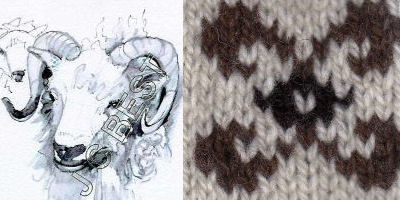GENUINE FAIR ISLE KNITWEAR DESIGNED AND HANDCRAFTED ON FAIR ISLE, SCOTLAND - THE HOME OF FAIR ISLE KNITTING.
The history of Fair Isle knitwear
A true Fair Isle garment made on Fair Isle will win you recognition anywhere.
Fair Isle knitting originated on the remote island of Fair Isle - a tiny jewel in the ocean lying midway between the Orkney and Shetland Islands to the north of Scotland in the UK, at the point where the Atlantic Ocean meets the North Sea.
The traditional knitwear of Fair Isle and its intricate skill have been practised continuously on this small Isle for generations upon generations. A rare store of patterns has evolved during this time and these are chosen and personally interpreted by each knitter so that each then achieves their own recognisable style. The traditional method of hand-knitting Fair Isle ‘in the round’ using double-pointed needles - known locally as ‘wires’- along with a special padded knitting belt, continues to this day. A small quantity of exclusive hand-spun, hand-knitted items are produced for sale on the Isle, as well as a number of high quality hand-frame garments.

Ram's Horns pattern.
Artwork copyright John C Best. Photo copyright Elizabeth Riddiford.
FURTHER INFORMATION
Visitors to Fair Isle can find more information about the history and origins of Fair Isle knitting at the George Waterston Memorial Centre and Museum on Fair Isle which hosts a range of interesting and informative displays on the traditional culture and handicrafts of the island.
Unless stated, all text and photographs on this website are Copyright of Elizabeth Riddiford, 2012. All rights reserved.
All knitwear designs on this website are the Intellectual Copyright of Elizabeth Riddiford, Fair Isle. All rights reserved.